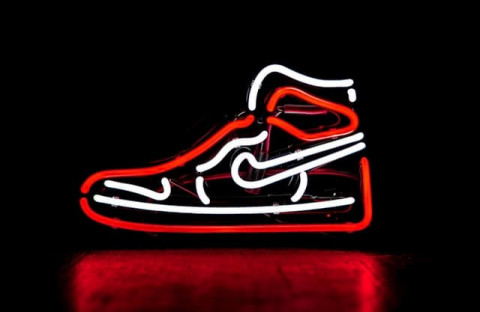
9 min
1
10.04.2022

This article will give you an idea of the value chain business model and how to apply it to the hospitality industry. This article will be useful for business school students who need economics homework help or accounting homework help.
Hospitality is a modern industry that began its development relatively recently - 100 years ago. Therefore, it is actively developing and needs a constant search for better solutions. The business model we will discuss below allows us to understand how you can get more revenue by attracting more customers, investing the right value in the company.
System of Values in the Hospitality Industry
The company is directly involved in the formation of values. Value reflects the importance of the good (set of useful properties) for consumers. The development of the category "customer value" was based on the labor theory of value. The essence of this theory is to determine the value of a commodity in order to establish its equivalence with other commodities during the exchange.
A functional feature of the hotel service is its differentiation into:
- basic (accommodation and food);
- additional types of services (the range of which depends on the category and type of enterprise).
Based on the above, the formation of the marketing concept of consumer value in the hotel industry should be considered in the format of the value chain of M. Porter.
What Is the Value Chain
The basic value chain model was first presented in Michael Porter's book "Competitive Advantage: Creating and Sustaining Superior Performance. (1985, New York). According to Porter, M., the whole production process is divided into two types of activity: primary and secondary. The value of the final product depends on them. Thanks to this, it was possible to identify ways to reduce costs and increase differentiation at each production stage. At what stage of the process hoteliers earn, and at what - they lose profits, the chain of values reveals.
In fact, the notion of the value chain is based on the processes view of organizations, the idea of seeing a developing or service organization as a system, made up of subsystems each with inputs, change process and outputs which involve the acquisition and ingestion of resources (money, equipment, labor, land, structures, management, and administration).
Value Chain Components
A tourist product is a complex set of activities necessary for the consumer, which are provided by different structures (organizations). At the same time, although some of them play a key role in generating demand and meeting the needs of consumers of tourism products, while others are only secondary and auxiliary, the total consumer value of a tourism product is formed as a result of the aggregate cooperation of all structures involved in the value chain.
The value chain is formed by:
- Main Activities (Primary Activities);
- Support Activities (Secondary Activities).
Primary Hotel Value Chain Activities
- Inbound logistics: all agreements with food and beverage suppliers; laundry services, etc.; home storage and circulation in hotel departments; inventory control and inventory recovery.
- Operations: procedures that allow you to produce goods and services offered on the market with the support of all advanced tools.
- Outbound logistics: the way of offering services and products and their distribution between several outlets and guests.
- Marketing and sales: all events that try to interest customers and people in the hotel for rooms, conferences, restaurants, as well as the promotion of the hotel with advertising and costs, taking into account competitors.
- Service: Good service will increase the value of the product and will be vital for the visitor, who will have to choose which of the many hotels to stay at.
Secondary Activities of Hotel Value Chain
- The infrastructure of the firm: the management team with permanent planning, product quality management, open public affairs, finance, and accounting.
- Human resource management: staff recruiting, selecting, training, development, and compensation.
- Technology development: the hospitality industry is constantly growing, so new solutions are needed to save time and work smarter. Here you should develop a program to monitor all transactions and exchange everything with all hotel departments in real time.
- Procurement: facilities wanted for guests, the building, and the gear that will support all the operations to make easy and smoothly the service.
External efficiency is measured by client satisfaction and market share. To achieve customer satisfaction, the business requires, which depends on the timely received goods and its services to standards by exterior suppliers. It is vital to truly have good communication and teamwork between suppliers at one end and the customer at the other end of the value string.
Cost Advantages, Differentiation, Technologies and Value Chain
Cost advantages. The organization can obtain cost-effective costs by lowering the price tag for certain value-based activities or reconfiguring the value chain. Once the value chain has been identified, a cost analysis can be made by estimating the cost of operating the value chain. The cost obtained from the accounting record might need to be modified to allocate them properly to the value-creating activity.
Differentiation. A differentiation edge can happen from any part of the value chain. For instance, procurement of unique and widely available inputs for opponents can create differentiation, as can distributor channels that offer high service levels. A product differentiation advantage may be performed by changing specific value chain activities to increase the final product's uniqueness or reconfiguring the value chain.
The technologies used at each stage of the value chain are one of the strategic directions of choice, which are related to the economical basis of costs. New technologies are used in both priority and support activities. For example, encouraging suppliers to produce equipment that is most appropriate to the technology used can increase an organization's competitiveness.
Hotel Value Chain Analysis
The best way to understand the principle of the hotel value chain can be understood by specific examples. To do this, we have chosen two large hotel chains - Hilton and Marriott.
Comparing the management systems and operation of these two hotel chains can be a great topic for research. If you are wondering "How do I write my research paper?", we also recommend reading our material.
Hilton Worldwide
Today it is a leading hospitality company, covering a wide range of high quality accommodation from mid-range hotels to luxury hotels with a full range of services.
Their success in the company was explained simply. Wealthy people, whether businessmen, royalty, or show business stars need, like ordinary middle-class people, unobtrusive comfort. This is the main luxury. This is a fact that began to attract at the Hilton Hotel, both millionaires and movie/music stars, and the ordinary middle class. They all liked the same hotels. Hilton hotels.
But it is one thing to talk about unobtrusive comfort, and quite another to provide it. What has been done for this? First, it was in the Hilton network that small kiosks appeared in the hotel lobby for the first time. No one before the Hilton equipped their hotel rooms with air conditioners, front doors with automatic control, alarm clocks and telephones, which include such a function as direct dialing (no need to call the hotel and ask to be connected to such and such phone number). In addition, the Hilton chain built its hotels near airports and seaports, thus offering tourists special packages (tour hotel). Finally, it is in the Hilton hotel chain that a special guest reward system called HHonors has appeared.
Marriott International
The Marriott hotel brand is one of the five largest and most powerful hotel chains in the world. The Marriott International chain has nearly 1,800 hotels worldwide. Marriott hotels are so diverse that they are designed to meet the needs of guests of different classes. Marriott hotels are renowned for their high standards of service around the world. This is facilitated by the training programs used in all hotels of the system (in particular, the program "Excellence in Service", which emphasizes the importance of corporate standards and their direct relationship with increasing customer satisfaction).
Marketing Policy Marriott International, one of which is represented by the Renaissance chain, has launched the Sales-2000 program, which has effectively broken the old sales system.
Each of the Hilton Worldwide brands has its own niche, and there is little overlap. Marriott International is different. In 2016, the company acquired the Starwood Hotels and Resorts Worldwide hotel chain, adding 11 more to the existing 19 brands. Because of this, niche intersections have arisen: for example, the brands EDITION Hotels and The Luxury Collection Hotels & Resorts, each of which includes exclusive hotels built to reflect the specifics of where they are located.
How to Improve the Hotel Value Chain
It is vital for hotel owners to understand at what stage and how exactly to increase the value of their business. To do this, you need to analyze business processes in several steps.
Step 1. Activity Analysis. At this stage, an analysis of all actions of staff and managers on customer service and service delivery. Task: to collect the maximum amount of information and feedback from people involved in the company (customers, hotel employees, managers, tour operators, travel agents, business partners, suppliers). This will form the most motivated and professional team and monitor the effectiveness of services.
Step2. Value analysis. Task: evaluation by the customer of a specific service in the activity. For example, the object of evaluation may be the quality of service after a telephone order to the room service. How quickly did you answer the call, fulfill the request, was the interlocutor polite? The client must be satisfied with the speed and quality of service. This analysis will identify the weaknesses of any activity and eliminate shortcomings.
Step 3. Assessment of changes and action plan. Through previous actions, it will be possible to generate ideas for improving the business and meeting customer needs.
Conclusions
As we can see, two very big hospitality companies worldwide are constantly striving to include value with their products. In the service industry and especially in the hotel industry, the value is added and created from the individual's inputs of your time, knowledge, accessories, and systems to provide the hotel guests and customers. Customers in these businesses can also be employees of the same organization. The more value is established, the more folks decide to pay the purchase price for the service or product, the greater they will continue buying from the same company. The decisions to distinguish the merchandise offered from both companies are necessary to add value and persuade the possible client to make the right choice.



